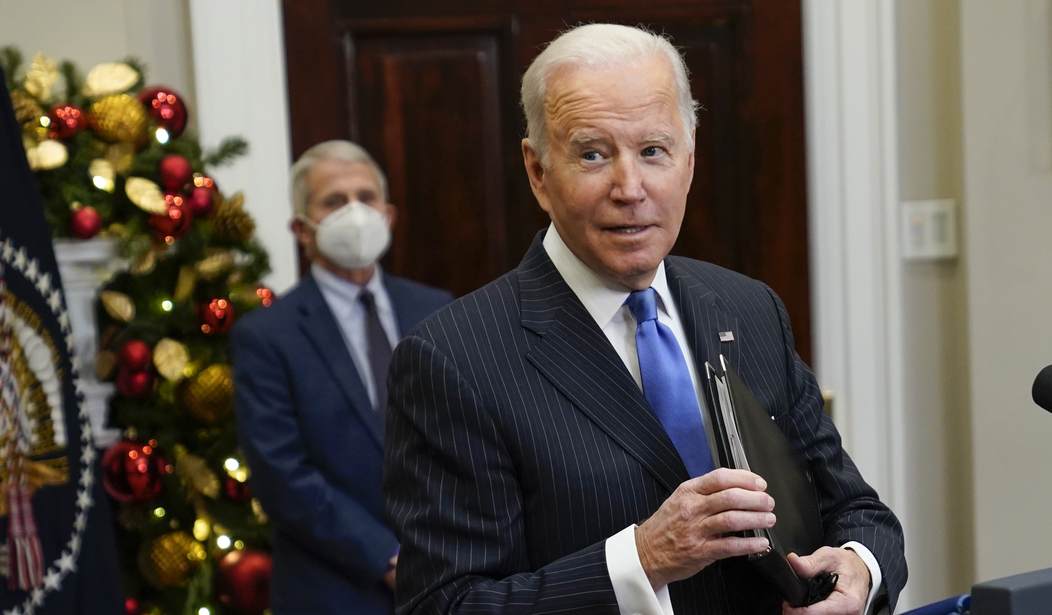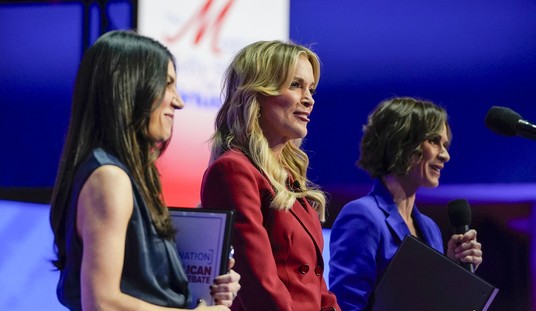On a slow news day like today, why not check in on a topic we haven’t visited in a while?
Tell me if this sounds familiar. A deadly virus begins spreading undetected in the United States, threatening to burst beyond the ability of quarantine and therapeutics to stop it. But the feds are slow to act. They can’t get their act together on testing; the CDC puts out misleading information; commercial laboratories are underutilized in the early effort to spot cases. America ends up flying blind for months about the extent of community transmission until the virus becomes so prevalent that it can’t be contained.
It happened with COVID. It’s happening again with monkeypox, experts tell WaPo. Except this time, the guy in charge is the one who got elected promising to “shut down” that other virus (which he failed to do). The professionals were supposed to be back in charge in Washington as of January 2021.
Yet many of the errors of 2020 are being repeated now, albeit on a mercifully much smaller scale.
Biden doesn’t even have the excuse that Trump did of having to cope with a novel virus about which nothing was known. Scientists know all about monkeypox: They know how it spreads, they know how to stop it. They even have a vaccine ready to go. In circumstances like those, you’d expect a germ to be stopped cold.
But it’s still spreading among Americans. Experts are sounding the alarm, hoping to wake up the powers that be:
Communication about whom to test, when to test them and what monkeypox symptoms look like has been dismal, said Sauer, a public health expert at the University of Nebraska Medical Center…
Clinicians, patients and some administration officials have faulted the Centers for Disease Control and Prevention for testing criteria that they say are too narrow and have resulted in long waits — sometimes multiple days — in identifying positive cases. Under the current framework, physicians who want a test for an individual suspected to have monkeypox must first consult with a state epidemiologist. State public health officials say that protocol helps identify people at highest risk so doctors can recommend isolation and take other steps to prevent community spread…
And just as in early 2020, when the coronavirus first menaced the United States, federal officials at first limited monkeypox testing to a network of several dozen public health laboratories — and did not authorize thousands of commercial laboratories and hospitals to perform their own testing, too…
The response has also been hindered by U.S. physicians’ lack of familiarity with the disease. The CDC initially publicized decades-old photos from more severe outbreaks in Africa, instead of the more subtle rashes detected in the recent global outbreak. The United States was far slower than Britain and Canada to distribute updated education materials, only recently sharing photos showing what the rashes look like on fair skin, said David Harvey, executive director of the National Coalition of STD Directors.
One patient in New York City showed up to a clinic this month with flu-like symptoms and swollen lymph nodes after returning home from Portugal, having had sex there with other men. If you’ve followed the news about Europe’s monkeypox outbreak, you know that should have triggered alarm bells in his doctor. The virus is primarily spreading among gay and bisexual men and a festival in the Canary Islands, off the coast of Portugal, seems to have been a superspreader event. The patient eventually developed abnormal lesions too — but he had to visit four different providers before one of his doctors finally hit on the idea of testing him for monkeypox. A virologist based in the city told WaPo that “he was aware of a dozen similar cases in which people with possible monkeypox symptoms were being rebuffed.”
Not a great effort by the CDC to put the word out if even doctors in America’s biggest city don’t know what to look for and can’t easily test.
The result is that America’s small number of confirmed monkeypox cases relative to Europe is almost certainly a gross undercount due to poor surveillance, not lesser spread. Known cases in Britain rose nearly 40 percent in the span of five days last week and the WHO is considering declaring a global emergency. Because there’s an extant vaccine for the virus, it’s crucially important to quickly identify patients and then rush the vaccine to their close contacts to stop the spread, i.e. “ring vaccination.” But the more the virus spreads undetected, the more contacts there are to trace, and suddenly it becomes logistically impossible to run down everyone who might have been exposed. You know how this story goes as well as I do.
In fact, it’s anyone’s guess whether the virus has already spread far enough in the population to make ring vaccination momentarily impossible. The U.S. has 36,000 doses of the leading monkeypox vaccine stockpiled; if there are, say, 6,000 people infected right now and each has six close contacts, that’s every last dose accounted for — if we can find those contacts and get it to them immediately. Every day that they have to wait means the pool of infected gets larger.
There’s another thing you know as well as I do, which is that the more people a virus infects, the more chances it has to mutate into something more contagious or more virulent or both. We’ve been living with that reality for two years with COVID. We’re living it now with monkeypox as well:
In the latest study, researchers discovered around 50 genetic variations in the viruses they studied compared to ones from 2018 and 2019. This, they said, “is far more than one would expect considering previous estimates” of the mutation rate of orthopoxviruses of which monkeypox is a type—between six and 12 times more…
“Considering that this 2022 monkeypox virus is likely a descendant of the one in the 2017 Nigeria outbreak, one would expect no more than five to 10 additional mutations instead of the observed about 50 mutations. We hope that now, specialized groups will perform laboratory experiments in order to understand if this 2022 virus has increased its transmissibility.”
It may be that monkeypox has been spreading quietly in western nations for awhile, having stumbled into a key mutation at some point that made it more transmissible, and the result has been the global outbreak we’re now experiencing. In fact, the CDC announced earlier this month that it had discovered a case in the U.S. that *pre-dated* the first cases in Europe in May. Which makes it all the more important to shut this thing down yesterday.
The good news is that the feds are getting their act together, belatedly. Another 300,000 doses of the vaccine are now on order and they just authorized five commercial labs to start performing monkeypox tests in July. There’s also good news in how the virus spreads (for now): Despite its many mutations, it appears that you need skin-on-skin contact or something very close to it in order to contract it. It’s “airborne” in the sense that it shows up in large respiratory droplets but not in aerosols a la the coronavirus, the key to COVID’s spread. Hopefully it’s not too late to slam the brakes here. We’ll know soon.







Join the conversation as a VIP Member